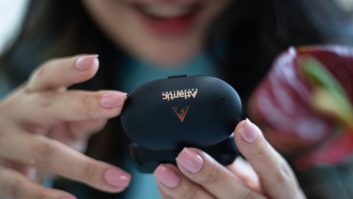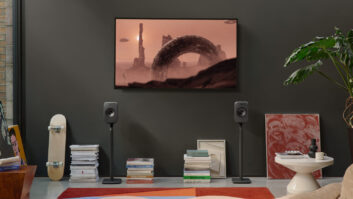Edmonton, Alberta –
, a fabless
semiconductor company, has targeted a new wireless technology for use in portable
devices with what it contends is better-than-Bluetooth performance in stereo music
applications.
Called
, the 2.4GHz
technology can be used in headphones, portable media players (PMPs), dongles
for PMPs and smartphones, tabletop speaker systems, and home and car audio
systems. A TRiK-equipped dongle for iPods and laptops could stream stored music
to tabletop speakers systems, home A/V products, and car stereo systems for
playback in the home or car. A TRiK-equipped smartphone could stream Internet
music services over the cellular network, then send the music to a home or car
audio system for playback. TRiK-equipped devices from different suppliers would
interoperate and would carry a TRiK logo.
Compared
to stereo Bluetooth, TRiK uses half the power, withstands 2.4GHz interference
without interruption, offers extended range, and uses a proprietary higher
quality audio codec, the company said. TRiK also adds a follow-me feature,
enabling a TRiK-equipped portable device to hand off music from one home audio
system to another when it roams from room to room.
Also
unlike Bluetooth, TRiK streams to up to four receivers simultaneously, not just
to one. And because audio latency is less than 40ms compared to stereo
Bluetooth’s 100ms, the company added, it can be used in headphones to listen to
the soundtracks of PMP-stored video without bothersome audio lag times.
Initial
implementations will consist of iPod/iPhone dongles and USB dongles for laptops
and netbooks, the former offering in-room transmission and the latter capable
of delivering multiroom distribution. Typical indoor range through walls is
conservatively rated at 10 meters for PMP dongles and 30 meters for USB dongles
intended for laptops and netbooks, whether operating on AC or DC, CEO John
Sobota said. In an open field, range grows 12x. Stereo Bluetooth’s typical
indoor range is 3 meters because of 2.4GHz-band interference, he said.
The
first products expected from branded suppliers will ship around July 1 in the U.S., Sobota said. Announced partners to date include
Boston Acoustics and Edifier, though their product plans haven’t been
announced.
Other
advantages over stereo Bluetooth include power efficiency. TRiK could run on a
single AAA battery for 15 hours, delivering twice the battery life of stereo
Bluetooth, the company said. To withstand 2.4GHz interference or “drop-outs,”
Eleven uses a patented Walking Frequency Diversity (WFD) protocol that includes
proprietary spread-spectrum frequency-hopping technology, which adaptively hops
channels 200 times per second. Other components of the technology are said to ensure
smooth data flow without interruption and to prevent collisions with other
wireless streams.
TRiK’s
audio codec is called HPX, which is not as heavily compressed as stereo Bluetooth’s
codec and delivers 20Hz through 20kHz frequency response with 0.01 percent THD,
or less distortion than is introduced by an amplifier, Sobota said.












